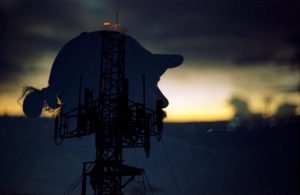MEO Satellites: Revolutionizing Global Connectivity with Medium Earth Orbit Technology

MEO Satellites: Revolutionizing Global Connectivity with Medium Earth Orbit Technology
MEO satellites, or Medium Earth Orbit satellites, are a type of satellite that operates at an altitude of approximately 2,000 to 36,000 kilometers above the Earth’s surface. This orbit is significantly lower than the Geostationary Earth Orbit (GEO) satellites, which operate at an altitude of around 36,000 kilometers. The lower orbit of MEO satellites allows for faster and more reliable connections, making them an attractive option for a wide range of applications, including telecommunications, navigation, and Earth observation.
The use of MEO satellites is becoming increasingly popular due to their ability to provide global coverage with fewer satellites than traditional GEO systems. This is because MEO satellites have a smaller footprint, allowing them to cover a larger area with fewer satellites. Additionally, MEO satellites have a lower latency than GEO satellites, which means that data can be transmitted and received more quickly. This makes MEO satellites ideal for applications that require real-time communication, such as video conferencing and online gaming.
History and Development of MEO Satellites
The concept of MEO satellites has been around for several decades, but it wasn’t until the 1990s that the first MEO satellite systems were launched. One of the earliest MEO satellite systems was the Iridium constellation, which was launched in 1998 and provided global coverage for mobile satellite communications. Since then, several other MEO satellite systems have been launched, including the Globalstar and O3b (Other 3 Billion) constellations.
The development of MEO satellites has been driven by advances in technology, including improvements in satellite design, propulsion systems, and communications equipment. Modern MEO satellites are designed to be more efficient and reliable than their predecessors, with longer lifetimes and higher data transmission rates. Additionally, the use of advanced materials and manufacturing techniques has made it possible to build smaller and lighter satellites, which are less expensive to launch and operate.
Applications and Benefits of MEO Satellites
MEO satellites have a wide range of applications, including telecommunications, navigation, Earth observation, and scientific research. One of the main benefits of MEO satellites is their ability to provide global coverage with fewer satellites than traditional GEO systems. This makes them ideal for applications that require widespread coverage, such as mobile satellite communications and navigation.
MEO satellites are also used for Earth observation, providing high-resolution images of the Earth’s surface for applications such as agriculture, forestry, and disaster response. Additionally, MEO satellites are used for scientific research, including the study of the Earth’s climate, weather patterns, and natural resources.
Challenges and Future Directions
Despite the many benefits of MEO satellites, there are several challenges associated with their development and operation. One of the main challenges is the high cost of launching and operating MEO satellites, which can be prohibitively expensive for some organizations. Additionally, MEO satellites are subject to interference from other satellites and terrestrial systems, which can impact their performance and reliability.
Looking to the future, it is likely that MEO satellites will play an increasingly important role in the development of global connectivity and communications. With the growing demand for high-speed and reliable internet access, MEO satellites are well-positioned to provide the necessary infrastructure for a wide range of applications, including telecommunications, navigation, and Earth observation. Additionally, the use of MEO satellites for scientific research and Earth observation is likely to continue to grow, providing valuable insights into the Earth’s climate, weather patterns, and natural resources.



